A gas take part in two thermal processes in which it is heated from the same initial state to the same final temperature. The processes are shown on the P−V diagram by straight lines 1→3 and 1→2
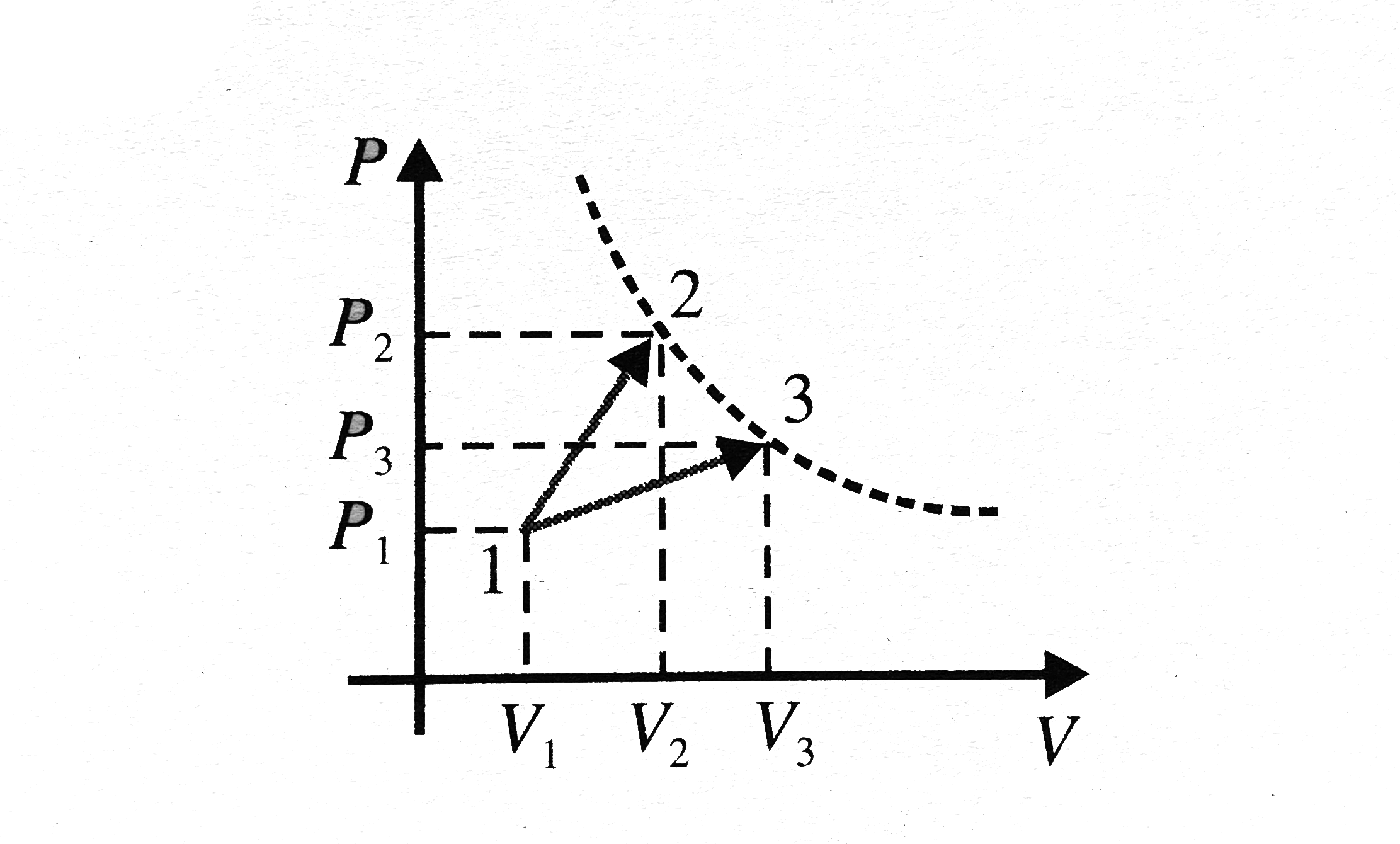
Q13<Q12
Q13>Q12
Q13=Q12
None of above
The correct Answer is:B
Since the temperature remains constant,
ΔT=0
Now
W12=12(P1+P2)(V2−V1)
W13=12(P1+P3)(V3−V1)
W12−W13=12[P1(V2−V3)+(P3−P1)]<0
W13>W12,Q13>Q12
Topper's Solved these Questions
- BOOK - CENGAGE PHYSICS ENGLISHCHAPTER - KINETIC THEORY OF GASES AND FIRST LAW OF THERMODYNAMICSEXERCISE - Interger11videos
KINETIC THEORY OF GASES AND FIRST LAW OF THERMODYNAMICS
- BOOK - CENGAGE PHYSICS ENGLISHCHAPTER - KINETIC THEORY OF GASES AND FIRST LAW OF THERMODYNAMICSEXERCISE - Assertion-Reasoning6videos
KINETIC THEORY OF GASES AND FIRST LAW OF THERMODYNAMICS
- BOOK - CENGAGE PHYSICS ENGLISHCHAPTER - KINETIC THEORY OF GASESEXERCISE - Compression2videos
KINETIC THEORY OF GASES
- BOOK - CENGAGE PHYSICS ENGLISHCHAPTER - LINEAR AND ANGULAR SIMPLE HARMONIC MOTIONEXERCISE - Single correct anwer type14videos
LINEAR AND ANGULAR SIMPLE HARMONIC MOTION
Similar Questions
A gas takes part in two processes in which it is heated from the same initial state 1 to the same final temperature. The processes are shown on the p-V diagram by the straight lines 1-3 and 1-2. 2 and 3 are the points on the same isothermal curve. Q1 and Q2 are the heat transfer along the two processes. Then,
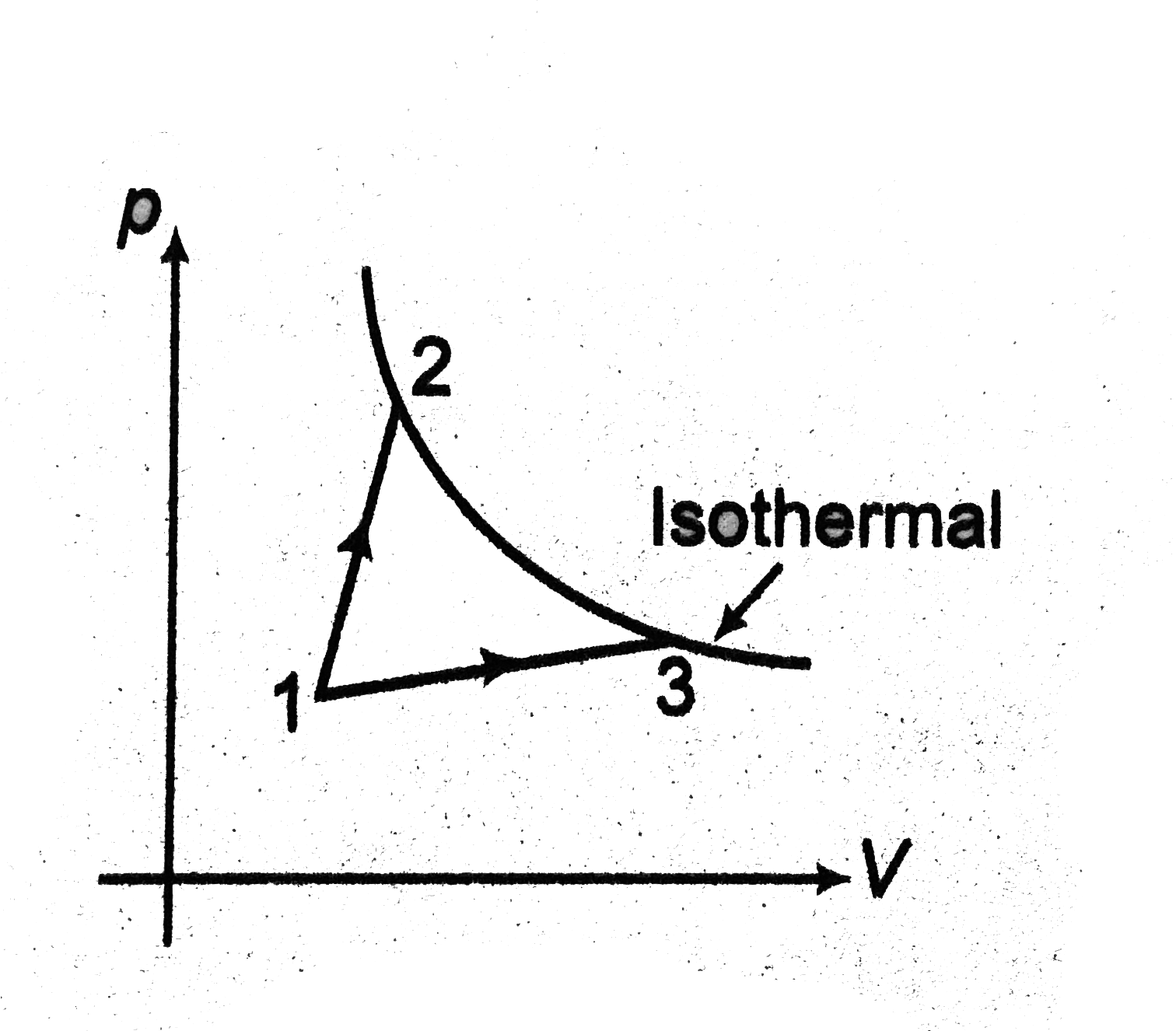 View Solution
View SolutionA gas took part in three thermal processes in which it is heated from the same initial state to the same final temperature. The process are shown in the P−V diagram by straight lines 1−2, 1−3 and 1−4. Q1, Q2 and Q3 are amount of heat supplied to the gas in the process 1→2, 1→3, 1→4. respectively.
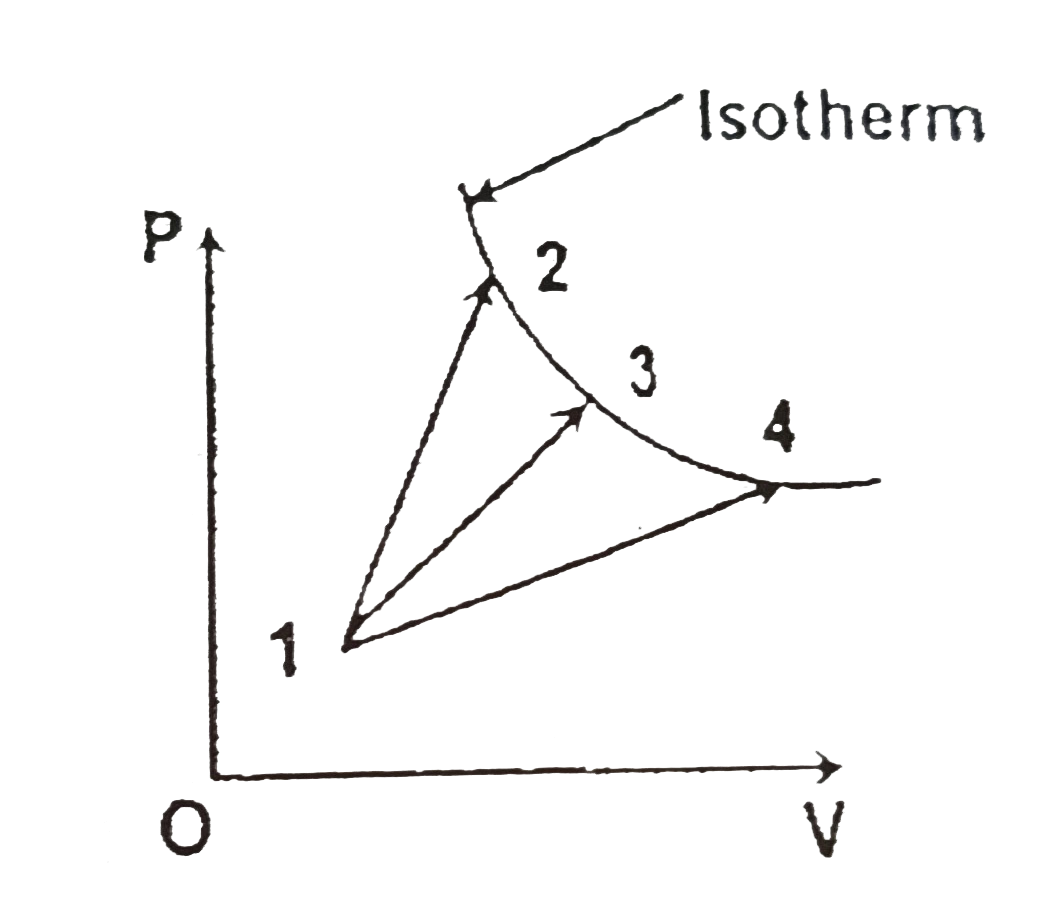 View Solution
View Solution
An ideal gas takes part in two thermal process in which it is heated from same initial state A. Once it is taken from A to B and in the other case from A to C. The points B and C lie on an isotherm. Choose the correct options.View SolutionA gas is enclosed in a cylinder with a movable frictionless piston. Its initial thermodynamic state at pressure Pi=105 Pa and volume Vi=10−3m3 changes to a final state at Pf=(1/32)×105PaandVf=8×10−3m3 in an adiabatic quasi-static process, such that P3V3=constant. Consider another thermodynamic process that brings the system form the same initial state to the same final state in two steps: an isobaric expansion at Pi followed by an isochoric (isovolumetric ) process at volume Vr. The amount of heat supplied to the system i the two-step process is approximately
View SolutionA cyclic process is shown on the V - T diagram . The same process on a P - T diagram is shown by
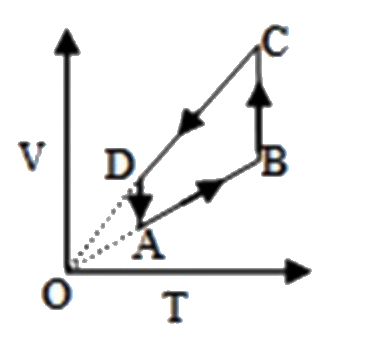 View Solution
View SolutionAn insulting container of volume 2V0 is divided in two equal parts by a diathermic (conducting) fixed piston. The left part contains one mole of monoatomic ideal gas whereas right part contains two moles of the same gas. Initial pressue on each side is P0. The system is left for sufficient time so that a steady state is reached. Find (a) the work done by the gas in the left part during the process, (b) initial temperature in the two sides, (c) the final common temperature reached by the gases, (d) the heat given to the gas in the right part and (e) the increase in the internal energy of the gas in the left part.
View SolutionConsider two processes on a system as shown in figure.
The volumes in the initial states are the same in the two processes and the volume in the final states are also the same.Let ΔW1 and ΔW2 be the work done by the system in the processes A and B respectively.
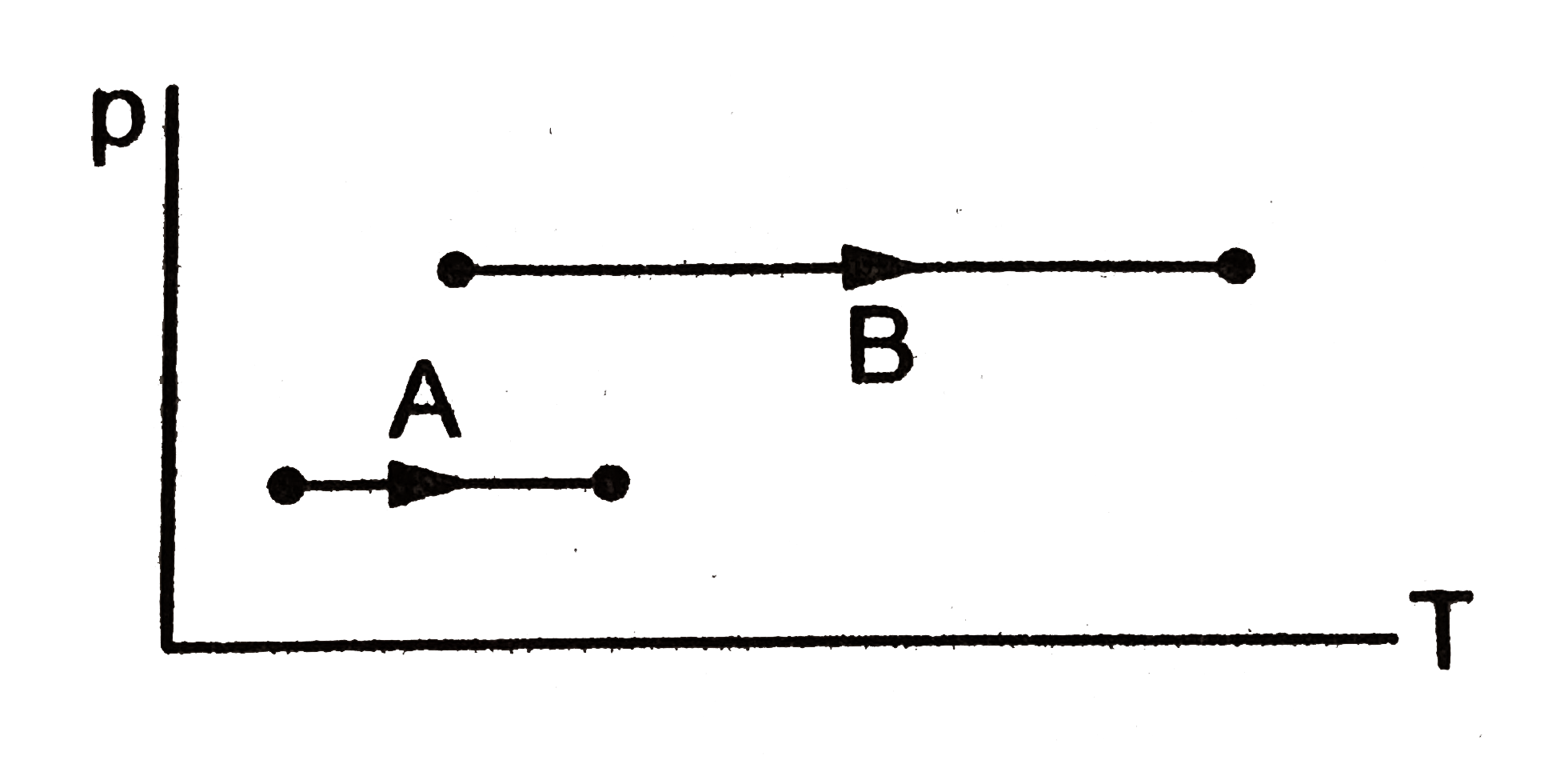 View Solution
View SolutionConsider two processes on a system as shown in figure.
The volumes in the initial states are the same in the two processes and the volume in the final states are also the same.Let ΔW1 and ΔW2 be the work done by the system in the processes A and B respectively.
 View Solution
View SolutionThe internal energy of a certain substance is given by the following equation :
U=3 PV+84
where U is given in kJ/kg, P is in kPa, and V is in m3/kg
A system composed of 3 kg of this substance expands from an initial pressure of 400 kPa and a volume of A 0.2m3 to a final pressure 100 kPa in a process in which pressure and volume are related by PV2=constant.
In another process the same system expands according to the same pressure-volume relationship as in above question, but from the same initial state of the final state as in above question, but the heat transfer in this case is +30 kJ.Then the work transfer for this process is :View Solutionconsider two processes on a system as shown in fig
the volumes in the initial stage are the same in the two processes and the volume in the final stage are also the same.Let ΔW1andΔW2 be the work done by the system in the processes A and B respectively.
 View Solution
View Solution

